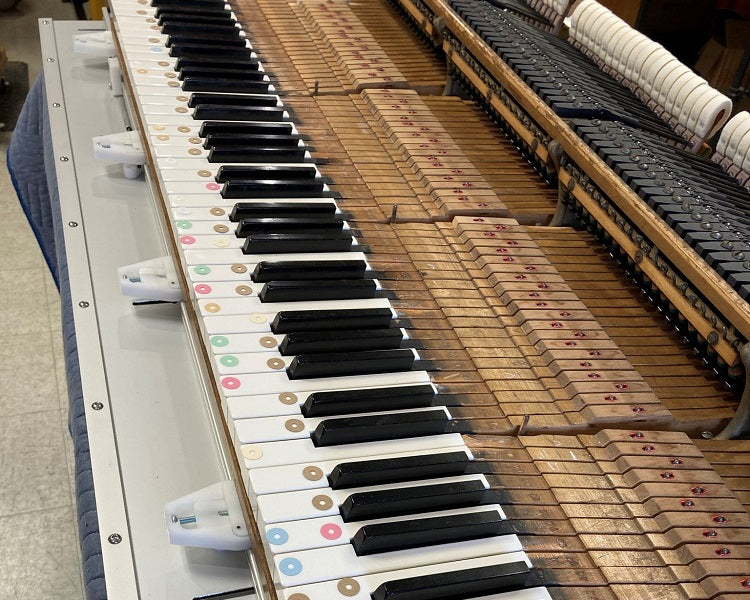Recording Spacing Scale and Strike Heights:
Setup now complete, record the hammer spacing scale and template heights at strike. The hammer spacing scale comes from the spacing of strings along the strike line as hammers must align with their strings. Whatever traveling, squaring, or spacing we receive in a worn action, hammer wearmarks show where their strings are at strike. So don't touch their traveling, squaring, or spacing (and don't file them) until you record the center of each unison on the Regulating Rack at strike. This will provide a real place to return to as things are changed during the regulation.
